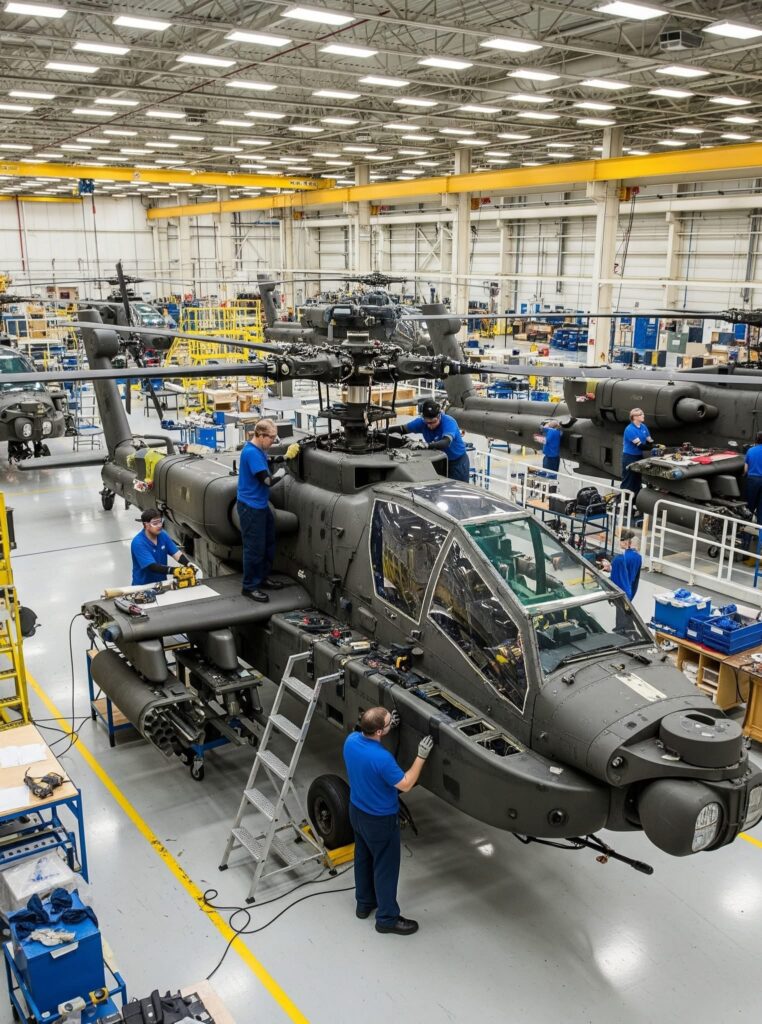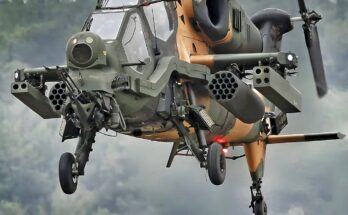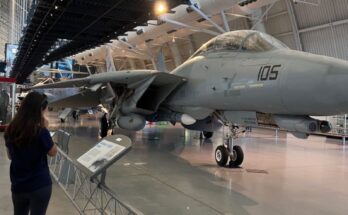
The AH-64 Apache is one of the most advanced and battle-proven attack helicopters in the world, developed by Boeing (originally Hughes Helicopters) to provide close air support, anti-armor capability, and all-weather combat effectiveness. Its manufacturing process represents decades of innovation in aerospace engineering, blending cutting-edge technology with precision craftsmanship to create a helicopter capable of operating in the harshest conditions.
From Concept to Production
Manufacturing the Apache begins with a carefully coordinated supply chain. Boeing’s primary production facility in Mesa, Arizona, serves as the hub where final assembly occurs. However, components are sourced globally. The fuselage, rotor blades, engines, avionics, and weapons systems are produced by specialized manufacturers before being delivered to the main plant. This modular approach ensures that the most advanced technologies are incorporated into each Apache.
Building the Airframe
The assembly process begins with the construction of the fuselage, which is made from a combination of aluminum alloys and composite materials. These materials provide a balance of strength, durability, and weight reduction—critical for combat operations. The fuselage is designed to protect the crew with reinforced armor around the cockpit, capable of withstanding small-arms fire and shrapnel. Engineers and technicians use automated drilling machines, laser alignment systems, and precision bonding techniques to ensure every structural component fits seamlessly.
Engines and Rotor Systems
The Apache is powered by two General Electric T700 turboshaft engines, which provide the thrust necessary for high performance in hot and high-altitude environments. During assembly, the engines are carefully integrated with the helicopter’s transmission and the main rotor system. The Apache’s four-blade rotor is built from composite materials, designed to withstand heavy stress while remaining lightweight. Each rotor blade undergoes extensive testing for durability and aerodynamic efficiency before installation.
Avionics and Mission Systems
One of the most complex stages of manufacturing involves the integration of the Apache’s advanced avionics. The helicopter is equipped with a state-of-the-art Target Acquisition and Designation Sight (TADS) and Pilot Night Vision Sensor (PNVS), mounted on its nose. These systems allow crews to detect, track, and engage targets day or night, in all weather conditions. Engineers also install the Longbow Fire Control Radar, a dome-shaped system mounted above the main rotor on the AH-64D/E variants, giving the Apache the ability to detect and prioritize hundreds of targets simultaneously.
Wiring harnesses, sensors, and mission computers are carefully fitted into the helicopter’s frame. The process requires extreme precision, as the Apache’s effectiveness relies on seamless communication between navigation, weapons, and defensive systems. Each avionics system is tested multiple times before the helicopter advances to the next stage of production.
Weapons Integration
The Apache’s formidable weapons loadout is also integrated during manufacturing. Beneath the fuselage, technicians install the M230 30mm chain gun, a powerful automatic cannon controlled by the pilot’s helmet sight system. On its stub wings, the Apache can carry a mix of AGM-114 Hellfire missiles, Hydra 70 rockets, and air-to-air weapons. Every weapons system is aligned and tested for accuracy and reliability before final assembly.
Testing and Delivery
Before an Apache is delivered, it undergoes extensive ground and flight tests. Engineers check structural integrity, avionics performance, weapons accuracy, and survivability systems. Test pilots then fly the helicopter to confirm handling, power output, and mission readiness. Only after passing all evaluations is the aircraft declared combat-ready.
Conclusion
The manufacturing of the AH-64 Apache represents a combination of advanced engineering, global collaboration, and meticulous attention to detail. From its armored fuselage and powerful engines to its cutting-edge radar and precision weapons, each Apache is built to embody battlefield dominance. The result is not just a helicopter, but a symbol of modern combat aviation progress.
Would you like me to also draft a step-by-step infographic description of the Apache’s manufacturing stages (airframe → engines/rotor → avionics → weapons → testing)?


